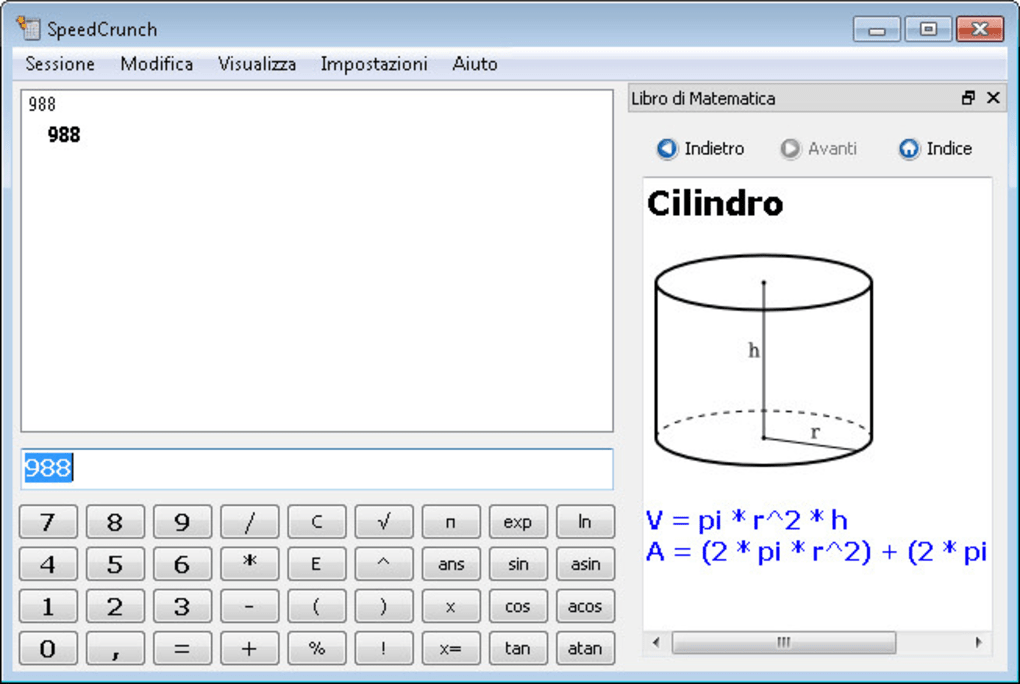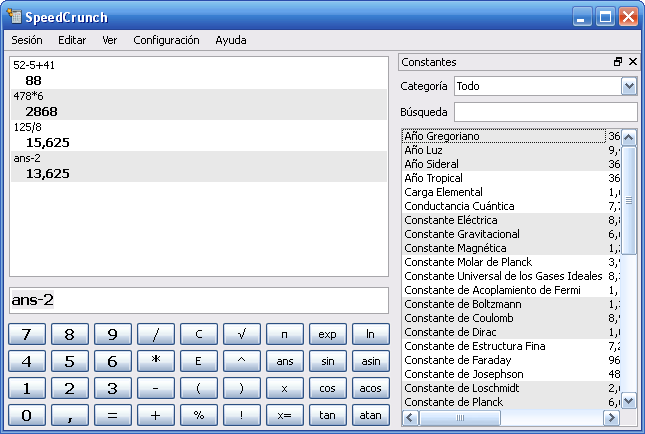
Financial functions such as future value and internal rate of return.Programmer's features (bitwise operations, non-decimal numbers).Mathematical operations such as logarithms and trigonometric functions.Arithmetic on rational numbers, complex numbers (rectangular and polar), error forms with standard deviations, open and closed intervals, vectors and matrices, dates and times, infinities, sets, quantities with units, and algebraic formulas.Arbitrary precision integers and floating-point numbers.Choice of algebraic or RPN (stack-based) entry of calculations.
#Speedcrunch integral series
Very roughly based on the HP-28/48 series of calculators, its many features include: "Calc" is an advanced calculator and mathematical tool that runs as part of the GNU Emacs environment. When I use infix calculators I find myself having to plan ahead a lot more to do a calculation, or writing out big long strings of math. This gives you a quick idea of how the various values contribute to the whole. However, before you do that you can easily look at the list (or just watch the stack collapse and see the values as you use them).
#Speedcrunch integral full
With an RPN calc you just perform each short calc and end up with a stack full of values, and then you hit + or * 10 times or whatever to sum/product the whole list. For example, often you'll run into equations in real life where some value of interest is a sum or product of lots of components (each of which is the result of a short calc). Seeing all the intermediate values often is useful in real-world situations, as well.

With an RPN calculator I can see the intermediate values, and yet keep them at full precision without any need for memories/etc. When I see people working with normal calculators and they need to capture intermediate values I often see lots of rounding and re-entry.

Want to start on the inside and work your way out? That is trivial.

Want to start on the outside of a big equation and work your way in? No problem - although you'll have to keep track of a few values on the stack (usually not a big deal unless the expression is very unwieldy). The fact that you have a stack means that you can attack a problem in almost any order, without really any sacrifice of keystrokes or hacks like the "Ans->" key or memories or whatever. One or two others have hinted at this, but I find that RPN just seems much more natural.


 0 kommentar(er)
0 kommentar(er)
